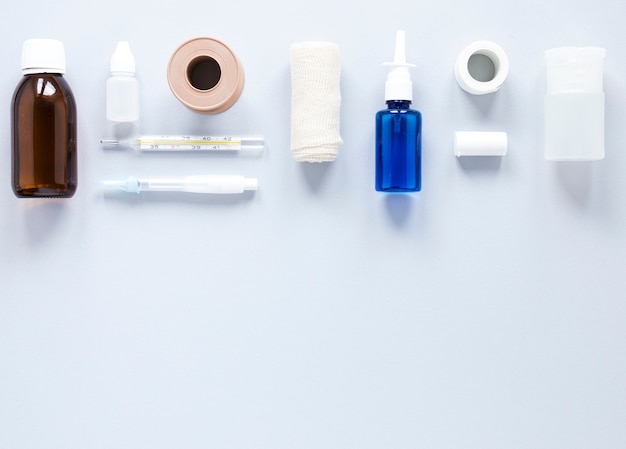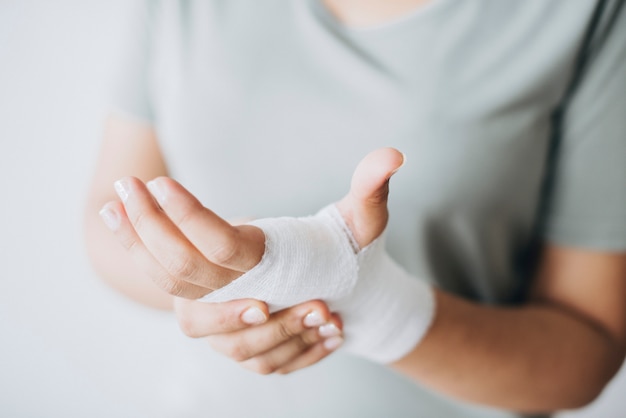Wound care is essential in proper health maintenance and knowing the proper way to handle, clean, and dress wounds could easily prevent the occurrence of severe infections and needing costly medical management. It is important, however, to highlight that even with sufficient basic first aid, this cannot completely replace proper medical assessment and consultation with a healthcare physician is still advised when dealing with severe injuries.

Wounds are basically any injuries that break the skin barrier. These could be due to a variety of causes ranging from falls, scratches, abrasions, lacerations, punctures, burns, or bites. The skin serves as an external barrier that prevents unwanted contamination from many unwanted external elements, including bacteria, from entering your system.
If an injury does occur that disrupts this barrier, the body has a set programmed adaptive response that deals with this. Warmth, swelling, tenderness, and inflammation are some signs that the body and its immune system are trying to contain and repair the site of injury. In cases of small uncomplicated wounds, the initial signs of recovery may become evident in a few hours. In the following 24-48 hours, the presence of a scab indicates that the body has accomplished its initial step into containing the damage and will proceed to repair and growing back skin to cover the affected area.

However, in cases of large wounds or wounds that are exposed to dirt and other harmful contaminants the body’s natural adaptive processes may not be able to sufficiently prevent the development of dangerous and worrisome complications. Things to look out for in these instances include some of the following:
- Severe and difficult to control bleeding
- The damage or injury continuing to spread beyond the initial site of contact.
- Tissue Necrosis which could present as the darkening or blackening of the skin surrounding the site of injury.
- Prolonged healing time, wherein there is no noticeable improvement of the injury over time
- Presence of pus, prolonged swelling, and warmth, or other lesions
- The development of other symptoms such as a fever
In such cases, immediate medical attention should be sought and properly treated. These complications can come about due to infections that develop and start from the site of injury. These occur due to the presence of bacteria or other microbes that enter through a break in the epithelial barrier and spread as they enter the body’s system. When not properly contained by natural immunity, that can continue to divide and spread which affects the body’s natural healing process and develop into a more difficult to manage a condition that could require antibiotics.

As such, there are some initial steps that can be taken to prevent these dreaded complications and can help aid in easier healing and recovery. Again, it is very important to emphasize that these steps will not guarantee complete protection and recovery and is no substitute from pursuing immediate medical assessment and treatment, whenever possible.
Step 1: Assess the site of injury
After initially sustaining an injury, it is very important to assess the severity of the damage. Important things to look out for are the presence of any immediate open wounds and the presence of bleeding. If there is any presence of large gaping wounds with heavy bleeding, use a cloth and apply immediate pressure to the site. Maintain a sustained heavy pressure on the site of bleeding and call for help. Seek medical attention as soon as possible. Important things to take note of are the manner in which you sustained the injury, the object or action that had caused it, and possible external contaminants such as soil or rust that the wound may have been exposed to. These are useful and beneficial information of the healthcare physician to know.
Step 2: Wash with running clean water
Even prior to using any creams, ointments, or antiseptics, the most important step in initial wound cleaning is to wash the site under clean running water. If bleeding is minimal or has ceased place the site under clean running water and continue to do so for 5-10 minutes. Making sure to wash away the presence of any soil or debris that may be surrounding the wound.
Step 3: The use of Hydrogen Peroxide or Iodine are not always recommended
The use of antiseptics may not always be needed for smaller, uncomplicated wounds. Cutasept or other such skin antiseptics may be used. However, current recommendations are discouraging the routine use of hydrogen peroxide or iodine-based products. These can be too harsh on the epithelium and actually slow down the natural wound healing process.
Step 4: Proper bandaging
Covering a wound site with proper bandaging is also an essential early step in proper wound care. Upon decontaminating the wound with a thorough washing, covering and bandaging the site would be the next appropriate step. There are several bandaging products in wound care that are currently being offered each with their own advantages. There are some bandaging products that are water-resistant, others are made of more breathable material to help facilitate faster wound healing and provide less skin irritation. It is important to know which bandage would be best suited for your type of wound and could require consultation with your healthcare physician.
Step 5: Changing of Dressing
For larger wounds that take longer to heal, changing the dressing or bandages of the wound may be required. If used for too long, an old dirty bandage can also be a possible source of infection. Proper changing of dressing would first require you to make sure that your hands are clean and washed before removing the bandage and toughing the wound. Second, upon removing the old bandage, one may again gently wash it with soap and water or use a light antiseptic to clean it. Do not try to remove blisters or scabs because this may prolong would healing. If still wet after cleaning, gently pat the affected area dry with a clean cloth before applying a new bandage.
These steps provide an initial overview of what can be done to help facilitate proper wound healing and prevent infections. There are still several other processes and things to consider when addressing a wound and should be discussed with a healthcare physician. If unsure of what to do or noticing that the wound is not healing, always seek medical attention.
If you are looking for wound care products such as bandages or medically approved antiseptics, check out the products offered here at BuyMedical.com.

